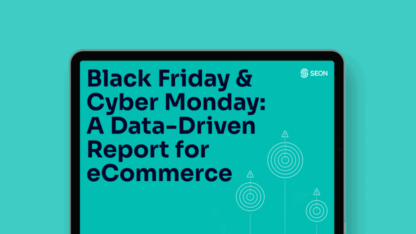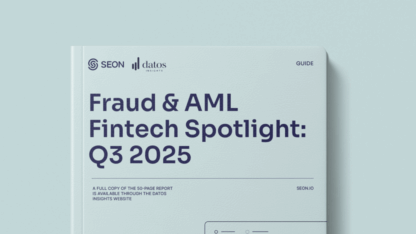As fraud continues to cost the economy billions each year, businesses are looking to Anti-Money Laundering checks to implement a stable defense against online fraud and set up defenses against the rise of cyber crime.
Fraud and AML are connected in both criminal and regulatory contexts, with businesses starting to coordinate and implement their AML checks as well as dedicate resources to anti-fraud responsibilities to achieve regulatory compliance and detect suspicious online activity better than ever before.
Organizations can benefit by leveraging their fraud resources with their AML efforts and take advantage of the significant efficiencies that can be achieved by greater collaboration between the fraud and AML departments.
What checks and balances can financial institutions implement to create a compliant and efficient defence against fraud? Our webinar gives the answer for this question and for other gripping ones as well.
Agenda
- Implementing above standard AML checks
- Monitoring suspicious activity
- Using powerful fraud detection and user verifications
- Automatic OSINT (open-source intelligence) tools
- Digital footprint analysis including social media presence
Speakers
- Charles Delingpole, Founder & CEO, ComplyAdvantage
- Bence Jendruszak, Co-Founder and COO, SEON
Key takeaways
Access to real-time data is critical
“Manually updating your databases is a never-ending process, with companies such as LexisNexis using 400+ researchers to constantly update and collate information. The more innovative tech companies have access to live data combined with machine learning algorithms and an end-to-end tech stack to not only ingest data but also update and link that data, enabling you to analyze much more than surface level.” – Charles Delingpole.
“Offering live data enrichment capabilities has been a real differentiating factor for us when approaching companies. There are many anti-fraud companies that base their product on a database built on years of operating so they know when my device or email address has been used as part of fraud in the past but this alone can easily create false positives. Solutions such as device fingerprinting, digital footprint analysis, and simply accessing as much real-time data as possible will help merchants in making the right decisions.” – Bence Jendruszak.
Impact of Change
“We are seeing a constant heightening of obligations. I think structurally society is looking to minimize bad happenings, for example, the implementation of 4/5AMLD. In the last ten years, there have been more onerous strategies to tackle the perceived threat of money laundering, fraud, and terrorist financing but we also have to consider the difference between online and in-person. For AML, you assume the person identified is correct but it’s about trying to understand the entity’s behavior, are there links to something much bigger? Are they sending money to higher-risk towns? An example in the online space is the risk of such false negatives once someone is accepted into your platform who then, for example, might buy hundreds of gifts cards to perpetrate fraud or theft.” – Charles Delingpole.
Education beyond your industry
“The best way to keep on top of trends or find new information is to read on it, write about it, and see if you can work with it in some capacity. For example, if you look at the industries coming through when people are buying a digital piece of land for over $4m, there’s going to be concern about where this money has come from. Then there’s wash trading with NFTs. Wash trading inflates someone’s service/product to mislead consumers on its true value which has been a technique for thousands of years. Some new techniques might evolve from this but there is no doubt that they represent another vehicle for potential money-laundering so the key is to understand the specific nuances of such platforms.” – Charles Delingpole.








